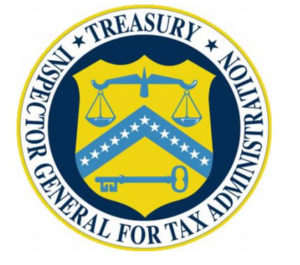Improper Payments Made By The Government
Sunday, August 4th, 2019 @ 3:07PM
One of CFEG’s missions is to expose wasteful government spending and find solutions to such problems through research, public awareness, education and legislative and program changes and initiatives. An Improper Payment is an example of wasteful negligent spending of taxpayer dollars by the Government. This article will discuss improper payments of tax dollars by the Government based upon the findings in various reports of the Government Accountability Office (GAO).
GAO defines an improper payment as any payment that should not have been made or that was made in an incorrect amount (including overpayments and underpayments) under statutory, contractual, administrative, or other legally applicable requirements. It includes any payment to an ineligible recipient, any payment for an ineligible good or service, any duplicate payment, any payment for a good or service not received (except for such payments where authorized by law), and any payment that does not account for credit for applicable discounts. See 31 U.S.C. § 3321 note. The Office of Management and Budget (OMB) guidance also instructs agencies to report as improper payments any payment for which insufficient or no documentation was found. https://www.gao.gov/assets/690/688434.pdf
The GAO recently reported that reducing payments that should not have been made or that were made in an incorrect amount could bring about significant savings. https://www.gao.gov/products/GAO-19-314SP#summary The GAO reported that improper payment estimates totaled about $151 billion for fiscal year 2018 and since fiscal year 2003, cumulative estimates have totaled about $1.5 trillion. https://www.gao.gov/products/GAO-19-314SP#summary These losses continue to grow notwithstanding the fact that government agencies are statutorily required to perform improper payment risk assessments to identify programs and activities that may be susceptible to significant improper payments and are required to report an improper payment estimate for ones that are susceptible to significant improper payments. https://www.gao.gov/products/GAO-18-36 For example, government-wide improper payment estimates reported for fiscal year 2016 was $144.3 billion, an increase of approximately $7.6 billion from the $136.7 billion estimate reported for fiscal year 2015. https://www.gao.gov/assets/690/688434.pdf
The Improper Payments Information Act of 2002 (IPIA), as amended by the Improper Payments Elimination and Recovery Act of 2010 (IPERA) and the Improper Payments Elimination and Recovery Improvement Act of 2012 (IPERIA), requires, among other things, that each federal agency review all programs and activities that the agency head administers and identify those that may be susceptible to significant improper payments— a process commonly referred to as an improper payment risk assessment. https://www.gao.gov/assets/690/688434.pdf IPIA defines significant improper payments as gross annual improper payments—the total amount of payments that should not have been made or that were made in an incorrect amount—that may have exceeded (1) both 1.5 percent of program outlays and $10 million of all program or activity payments made during the fiscal year reported or (2) $100 million (regardless of the improper payment percentage of total program outlays). https://www.gao.gov/assets/690/688434.pdf
The GAO reported that if a government agency’s improper payment risk assessment finds that a program is susceptible to significant improper payments, the agency is required by IPIA to estimate the annual amount of improper payments for the program, publish corrective action plans, set reduction targets, and annually report on the results of addressing these requirements for that program. IPIA states that each agency is required to publish the improper payment information in an annual report in the form and content required by OMB and post that report on the agency’s website. https://www.gao.gov/assets/690/688434.pdf
It is important to note, according to the GAO, that the estimates of losses as a result of improper payments may not be accurate, reliable or complete because agencies have used inappropriate sampling methods and inadequate estimation methodologies to calculate the estimated losses. https://www.gao.gov/assets/690/688434.pdf
One Florida Congressman recently introduced a bill to combat improper payments. In May of 2019 Congressman Greg Steube (FL-17) introduced the Valid Benefits Act. This bill requires the heads of federal agencies to verify eligibility for federal benefits for individuals 105 years of age or older.
Upon introducing his bill, Congressman Steube reported that it is “estimated that in 2018 alone, dead people received $1 billion in benefits from Medicare, Medicaid, social security payments, and federal pensions.” Under Congressman Steube’s bill, heads of federal agencies and departments will be required to verify that those they are giving benefits to are in fact alive. https://steube.house.gov/media/press-releases/steube-introduces-valid-benefits-act-verify-eligibility-federal-benefits
CFEG agrees with Congressman Steube that as our nation’s national debt continues to grow it is important to make sure that taxpayer money is not wasted and lost through improper payments and that our tax dollars are spent in the way and in the manner intended. Congressman Steube’s bill has been referred to the House Committee on Oversight and Reform where he is a member. https://steube.house.gov/media/press-releases/steube-introduces-valid-benefits-act-verify-eligibility-federal-benefits
Posted by cfegov
Categories: IRS WASTEFUL SPENDING












